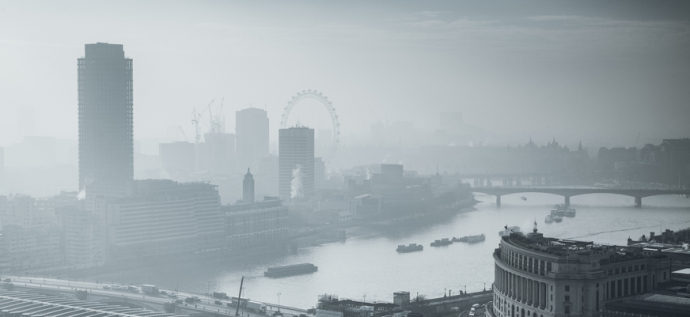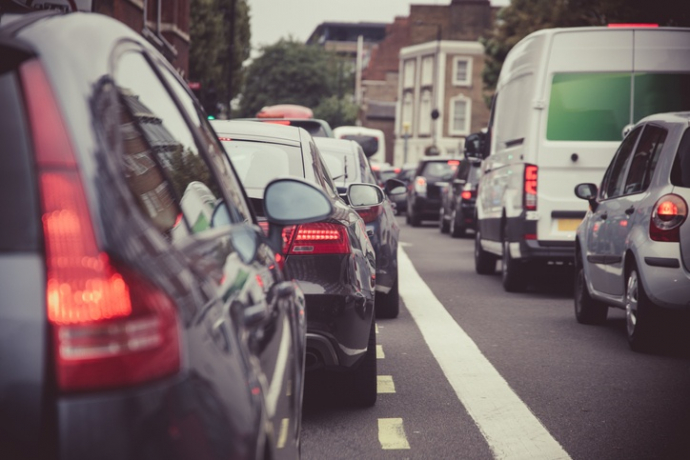
The Ultra Low Emission Zone (ULEZ) will expand to include the whole of Greater London under plans laid out by mayor Sadiq Khan.
Currently, drivers of more polluting vehicles are charged £12.50 per day to enter London within its north and south-circular orbital roads. Failure to pay the charge lands drivers with a £160 fine.
However, under new proposals the ULEZ zone will expand to take in London’s outer boroughs by the end of 2023.
Mr Khan said: “The triple challenges of tackling toxic air pollution, the climate emergency and congestion mean we need to further reduce emissions from vehicles in London. This is also a matter of social justice – with air pollution hitting the poorest communities the hardest. I believe the proposal to extend the ULEZ London-wide will have the biggest effect on emissions and congestion relative to the potential financial impact on Londoners as a whole.”
According to City Hall estimates, the expanded ULEZ scheme will remove from London air up to 330 tonnes of nitrogen oxide 150,000 tonnes of CO2.

Which vehicles are affected by new ULEZ zone?
Vehicles liable for the ULEZ daily charge include petrol cars and vans that do not meet Euro 4 (pre-2006), motorbikes that do not meet Euro 3 (pre-2007), diesel car and vans that do not meet Euro 6 (pre-2015) and buses, coaches and lorries that don’t meet Euro 6 will have to pay a higher charge of £100 oer day.
You can check whether your own vehicle is ULEZ compliant using TfL’s checker
London road user charging
The plans for an extended ULEZ will now be put out to consultation. However, in theory the entire ULEZ may be dropped alongside the congestion charge and toxicity charge in favour of a London-wide road pricing scheme.
The capital has seen a shift to driving during the pandemic with the cost of congestion rising to over £5 billion last year, leading to gridlocked roads and toxic air pollution. The number of miles being driven in the capital has increased in recent years, even though more than a third of car trips in London could be walked in under 25 minutes and two-thirds cycled in less than 20 minutes.

In order to achieve anywhere near the required reduction in car use, London will need a new kind of road user charging system. Such a system could abolish all existing road user charges – such as the Congestion Charge and ULEZ – and replace them with a simple scheme where drivers pay per mile, with different rates depending on how polluting vehicles are, the level of congestion in the area and access to public transport.
“The Mayor of London, Sadiq Khan, said: “I’m not willing to stand by and wait when there’s more we can do in London that could make a big difference. We simply don’t have time to waste. The climate emergency means we only have a small window of opportunity left to reduce carbon emissions to help save the planet, and, despite the world-leading progress we have made over the last few years, there is still far too much toxic air pollution permanently damaging the lungs of young Londoners.
“This is also a matter of social justice – with air pollution hitting the poorest communities the hardest. Londoners on lower incomes are more likely to live in areas of the city most badly affected by air pollution and least likely to own a car. Nearly half of Londoners don’t own a car, but they are disproportionally feeling the damaging consequences polluting vehicles are causing.”
The ethical choice
The ETA was established in 1990 as an ethical provider of green, reliable travel services. Over 30 years on, we continue to offer cycle insurance , breakdown cover and mobility scooter insurance while putting concern for the environment at the heart of all we do.
The Good Shopping Guide judges us to be the UK’s most ethical provider.
Chris Adair
As a road user in London I use the Car when delivering goods, and cycle everywhere else.
During the pandemic years we have seen Londons streets converted to cycle lanes, side roads blocked. So London now has a vastly reduced road network available to motorised vehicles. Just as many goods need to be delivered as before. I have seen traffic reduce markedly in central London after the ULEZ expanded, yet we still have gridlocked areas, and that I put down to the disappearance of roads available to vehicles, one example is the Marlebone Roa Eastbound drops to 1 lane to allow for a cycle super highway – a stupid place for a cycle highway as all the parallel roads south of Marylebone Rd are lovely to cycle on and have very few cars. It used to be 2 lanes + Bus lane. So the war on vehicles is making it very hard for tradesmen to operate, and expensive for delivery companies. London will continue to be gridlocked at rush hour unless the powers that be look carefully at how their road closures are causing these traffic jams – which create substantial pollution. Subsidies for electric cargo bikes would help, and place to park them !
David
Personally, as a motorist who lives on London’s outskirts and drives very infrequently, I like the idea of road pricing in place of congestion charging. However, I would be interested to know how this can be made to work. Would all vehicles need to be fitted with a “black box” that broadcasts the vehicles’ position / movement, or would it be done by a network of cameras? If black boxes, then all vehicles currently registered for use in the UK would need to be fitted with one (and that would still leave foreign registered vehicles to contend with). On the other hand, an awful lot of cameras will be needed (at least one on every junction on all roads within the pricing area). I can see battles ahead.
Doug M
Chris Adair makes some very valid points. As usual, our London Mayor does the wrong things for the right reasons! He is making London an impossible place to live in while encouraging the building of even more houses, especially ghastly and often unsafe high-rise flats. Whatever he says about “affordable housing” and “they won’t need/afford to use cars”, he won’t solve the housing problem. The more housing, the more people will come – London is a population magnet – and most of them will still have cars! The infrastructure, in every aspect, is chronically overloaded already. Not just roads and parking, but Water, Sewage, Doctors, Dentists, Schools, etc, etc. And as a cyclist (less often as I get older!), the outer London cycle lanes are just ridiculous The narrow ones along main roads are used as car parks where yellow line allow, and the shared pavement ones are obstructed by pedestrians, usually fiddling with their mobile phones. End of rant!